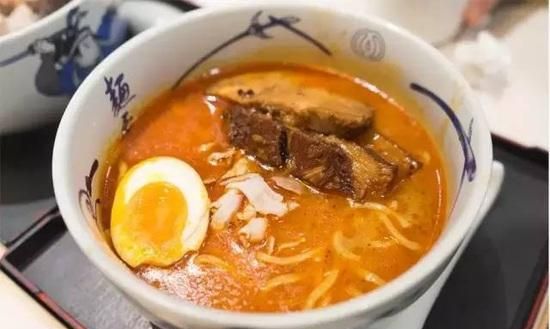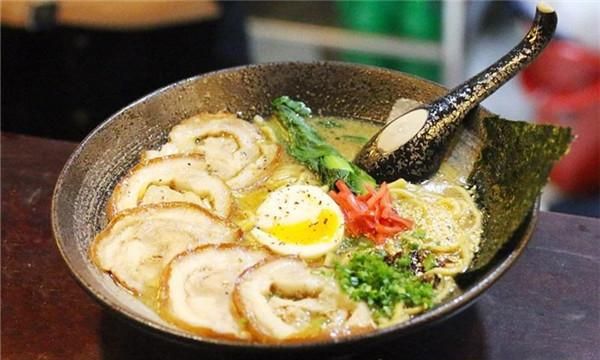Contents of this article
- 1.
- 2. Japanese etiquette for eating ramen
- 3. What’s the story about whether you should eat ramen in Japan?
- 4. What’s the meaning of eating ramen together in Japan?

Japanese etiquette for eating ramen
In recent years, in addition to the well-known "Ichiran Ramen", other famous Japanese ramen restaurants such as "Menya Ito", "Tunkyo Ramen", "Nagi NAGI", "Ryukyu New Noodles - Tongdo", etc., have come one after another. Stationed in Taiwan, there is a "ramen craze" across Taiwan. You don't have to fly all the way to Japan to enjoy authentic Japanese ramen. As "Japan's national delicacy", ramen contains a lot of Japanese food culture and etiquette. This time I have sorted out the key points for entry-level, let's learn about ramen culture together!
What should you pay attention to in Japanese ramen culture?1. Little common sense: Before getting to know ramen, first get to know your good ramen friends!
When Japanese people enjoy ramen, they often pair it with "side dishes". The most common good friend of ramen is "Japanese fried dumplings". It can even be said that fried dumplings play the finishing touch in Japanese ramen restaurants. If the fried dumplings are cooked well If you eat it, it will also help the ramen shop to score points!
In addition to fried dumplings, it is often eaten with "white rice" or "fried rice". Some ways of eating it are to finish the ramen, leaving part of the soup base, and add the rice. This way of eating is called "ramen rice". Every place in Japan has its own unique way of eating. For example, in Wakayama ramen restaurants, boiled eggs are served on the table together with the local dish "Macker Oshi Sushi".
For the Japanese, fried dumplings are the perfect side dish, and if the ramen shop makes delicious fried dumplings, it will be a big plus!
2. Ramen shops used to be the domain of men or laborers.
In the past, most ramen shops in Japan were narrow and located under viaducts, in alleys or on the roadside. Their customers were generally low-level workers or men. Single women would hardly go there to dine. On the one hand, Japanese women pay great attention to their own image. Eating at a ramen restaurant is "not elegant enough", and it is easy to feel embarrassed when dining alone. On the one hand, the conservative Japanese society in the past believed that women were "in public" in such occasions, and it was "indecent" for women to come into contact with other people because of the narrow seats.
Nowadays, as the times evolve, conservative ideas are gradually loosened. It is common for women to dine out alone. The positioning of ramen shops has gradually changed. The store decoration is more comfortable, and more and more women or families are willing to patronize it. There are also ramen shops that follow suit. "Ichiran Ramen", the store layout is designed into personal compartments, allowing customers to maintain privacy when dining, and single women can also dine with peace of mind.
In the past, ramen shops were actually an exclusive resting place for men or lower class people, and women rarely ate here.
3. Is it true that you have to make a sound when eating ramen?
Regarding this question, whether you are a Japanese fan or not, you must have been asked tired of it, right? It is often said that in Japan, making noise when eating ramen represents the delicious food and praises the craftsmanship of the ramen master. It is an expression of appreciation of the food. It would be rude to eat quietly. . In fact, in today's international society, where cultures from different countries communicate with each other, there are no such hard and fast rules. Everyone just needs to let nature take its course. If you really want to express your admiration or gratitude, you might as well say to the chef before leaving after the meal. Say "thank you for hosting"!
4. Is it etiquette to finish the soup?
The most essential and labor-intensive part of Japanese ramen is the soup. This is also where the regional specialty ramen differs. It can be said that "the soup is the soul of ramen", so there has always been a saying that "Japanese people regard finishing the soup as a sign of respect for the ramen master." However, in fact, the soup of Japanese ramen has a strong taste, and is often eaten with rice or side dishes. There is even a local Japanese culture that believes that part of the soup base must be left to show one's "generosity", so next time I go to eat You don’t necessarily have to drink all the soup when making ramen, you just need to adapt it to your own taste.
How to eat ramen without being rude?
5. Why is the original amount of Japanese ramen noodles always very small, and why do you always have to add some "subiyu" yourself?
"Tama" means "added noodles" in Japanese. In an authentic ramen shop, the original amount of noodles will not be too much, about 120g per serving. Because the ramen noodles are easy to soak and affect the taste, so discerning shops will suggest or take the initiative Ask the customer if he or she wants "subiyu" so that the customer can enjoy noodles with moderate hardness. Another reminder, generally ramen restaurants only provide the service of adding noodles, and adding soup mostly requires extra charges. Don’t rush to finish the soup before adding noodles!
6. Not just ramen shops, why do Japanese restaurants often only provide ice water?
When Japanese people eat ramen, they usually mix it with ice water to soften the rich soup flavor. In fact, Japanese restaurants generally only provide ice water out of respect for customers. In the early days, it was not easy to obtain ice. Ice water was usually only used to entertain distinguished guests. It has a more respectful connotation than room temperature water or hot tea. To this day, store owners believe that hospitality Ice water for guests can better express the feelings of "honored guests", even in winter. Don’t worry if you are afraid of the cold. In winter, almost all stores in Japan will turn on the heating indoors. If you really want something hot, it is recommended to order the hot drinks in the store. After all, most Japanese stores will not prepare warm water. Store-provided ones can also cause a little trouble.
Not just ramen shops, why do Japanese restaurants often only serve ice water?
7. There are special rules for using and resting chopsticks
In most Eastern societies, inserting chopsticks straight into food means disrespect or worshiping the dead. Japanese people also don't like to place chopsticks flat on the bowl. Many elders also regard it as impolite behavior and usually put chopsticks on the chopstick holder. Take a break; in addition, you cannot use chopsticks to pass food to each other. You should put it into each other's food containers to avoid being rude.
Like China, the Japanese also have special rules for using and resting chopsticks.
Understand the above 7 basic items of Japanese ramen culture, and you will be able to eat more carefully next time whether you are in a ramen restaurant in Japan or China. Let’s experience the charm of Japanese food culture together!

What’s the point in Japan whether you should eat ramen or not?
There is a joke about eating ramen
It’s mentioned in Xiaomeng’s disservice. Some ramen shops are closed, so the ramen chef can't see the customers (it's just a small hole, much like the front desk of a love hotel), and there are partitions between customers at the bar. Xiaomeng explained that it was because the girl didn’t want people to know that she wanted to add noodles.
This is a small episode story, I hope you want the answer.

What's wrong with eating ramen together in Japan?
Eating ramen together in Japan means eating together.
Pulled noodles (foreign name: Lamian Noodles), also known as dumpling noodles, pulled noodles, and stretched noodles, are a traditional noodle dish with unique local flavor in urban and rural areas in northern China. According to folklore, it is famous for its stretched noodles in Fushan, Shandong, and originated in Fushan. Ramen one said. Later, it evolved into famous delicacies with various flavors, such as Lanzhou Ramen, Shanxi Ramen, Henan Ramen, Longxu Noodles, etc.
Ramen can be steamed, boiled, baked, fried, or stir-fried, each with its own flavor. Ramen noodles are very technical. To make ramen noodles well, you must master the correct key points, that is, the noodles must be kneaded to prevent dehydration, the noodles must be rolled evenly, the noodles must be evenly rounded, and the noodles must be spread out when put into the pot to prevent lumps from squatting in the pot. According to different tastes and preferences, ramen can also be made into different shapes and varieties such as small ramen, hollow ramen, stuffed ramen, capillary, 2-thin, large wide, longxu noodles, flat ramen, water ramen, etc.
Geng, an Internet term, means the point of laughter. Meme is to pave the way for the point of laughter. It is a misuse of the word "哏". Generally speaking, memes are used for popular things such as variety shows, animations, TV series, etc. The meaning of the word "Geng" has been continuously expanded and extended. It can be called a "Geng" as long as a certain time period, as small as a plot episode, or even a fragment that happened in the story, such as "Height Meme", "Classic Meme" and "Face-shaking Meme" "Romantic memes", "humorous memes", etc.

The above is all about the hidden meaning of eating ramen in Japan, what are the jokes about eating ramen together in Japan, and the related content about chilam. I hope it can help you.
